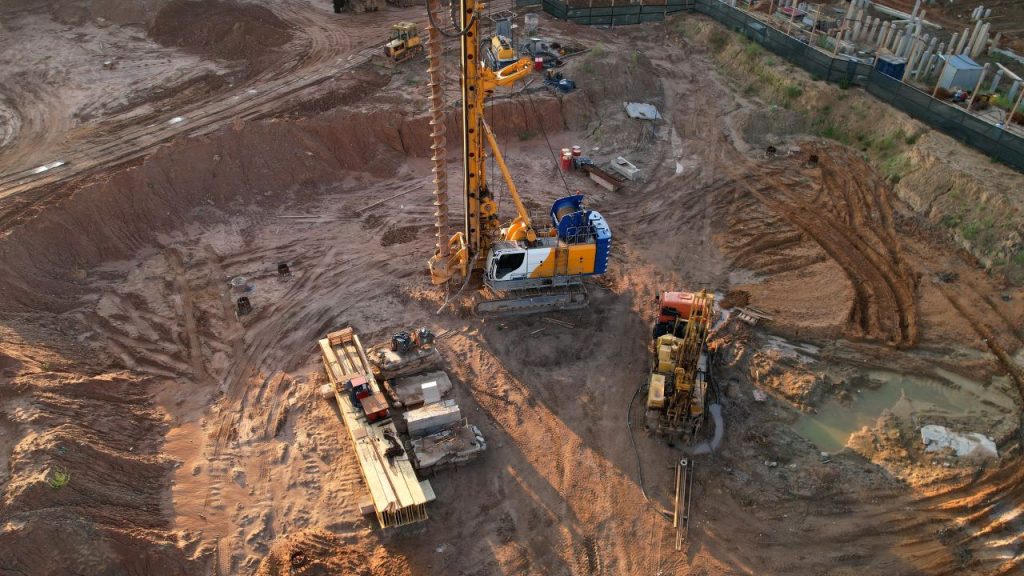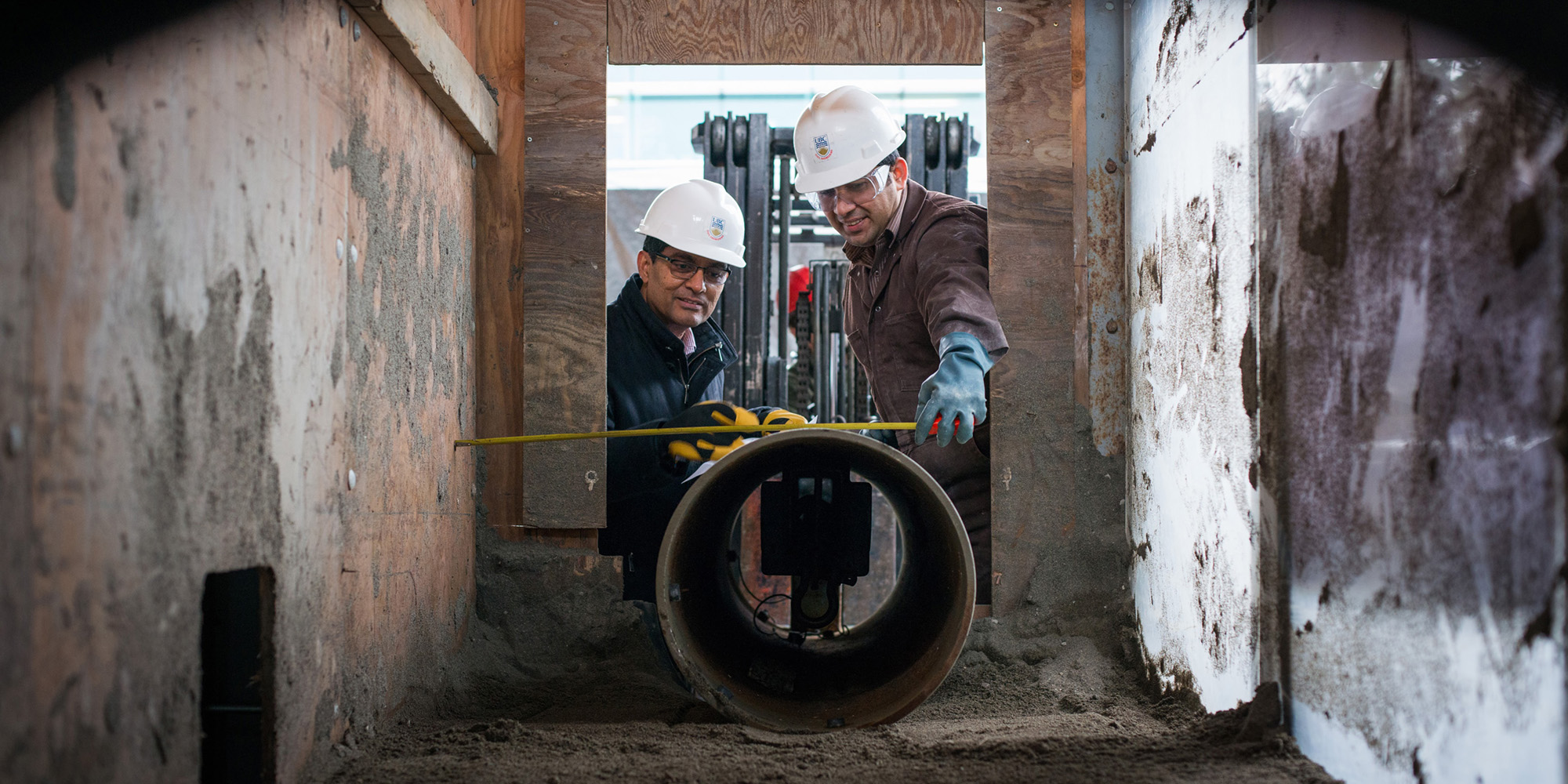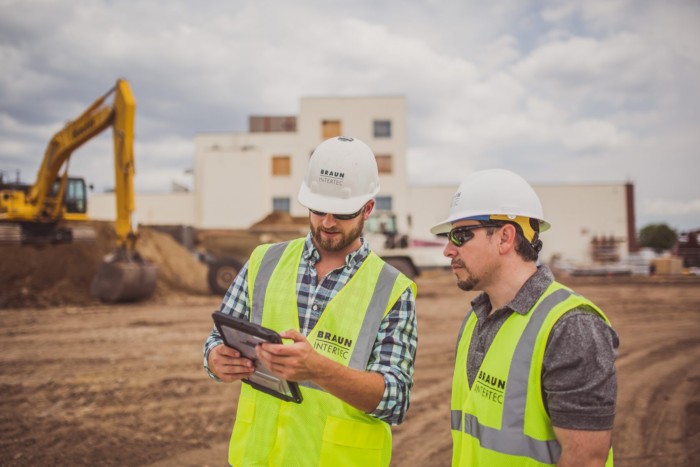Why the Geotechnical Industry Requirements Ingenious Solutions Now
Wiki Article
A Thorough Review of the Trick Responsibilities of Geotechnical Engineers in Site Characterization and Ground Improvement Strategies for Engineering Solutions
Geotechnical engineers are indispensable to the successful implementation of engineering projects, charged with the essential responsibilities of website characterization and the application of ground improvement techniques. Their job entails a complete analysis of subsurface problems, utilizing different testing techniques to identify soil and rock buildings.Duty of Geotechnical Engineers
Geotechnical designers play a pivotal function in the design and construction of framework by evaluating the actions of dirt and rock under the surface area - civil consulting engineers. Their responsibilities include evaluating subsurface conditions to educate design choices that make sure structural security and security. By performing comprehensive evaluations of soil residential or commercial properties, including shear leaks in the structure, compressibility, and toughness, geotechnical designers give essential data that affects the choice of appropriate construction materials and strategiesAlong with analyzing dirt auto mechanics, geotechnical engineers are tasked with determining potential dangers such as landslides, sinkholes, and ground settlements. Their proficiency helps reduce dangers related to these geotechnical sensations, thus shielding both the setting and public safety and security. They additionally work together carefully with various other design self-controls, making certain that geotechnical considerations are integrated right into general job style.
Moreover, geotechnical designers engage in the analysis of existing frameworks, offering recommendations for retrofitting and repairs when needed. Their thorough understanding of soil-structure interaction is essential for the advancement of lasting framework solutions. In general, the role of geotechnical engineers is essential to the effective realization of construction projects, guaranteeing they are safe, durable, and compliant with regulatory standards.

Site Characterization Processes
Reliable site characterization procedures are vital for understanding the subsurface conditions that influence project layout and execution. Geotechnical engineers use a systematic strategy to gather, examine, and translate data regarding soil, groundwater, and rock attributes. This procedure begins with a comprehensive testimonial of existing literature and archaeological site information, supplying insights into previous website problems and possible challenges.
Information evaluation follows fieldwork, where engineers make use of geostatistical methods to analyze findings and create geological versions. This modeling aids in determining prospective geohazards, such as landslides or liquefaction, which are critical for threat analysis. Subsequently, the results notify style recommendations, ensuring that design remedies are both efficient and secure. Via diligent website characterization, geotechnical engineers prepared for effective task implementation, decreasing unforeseen difficulties and maximizing source allowance.
Dirt and Rock Screening Techniques
While comprehending subsurface problems is essential, the selection of appropriate soil and rock testing methods is similarly crucial for exact analysis and style. Geotechnical designers utilize a variety of testing methods to examine the physical and mechanical residential properties of dirt and rock materials.Research laboratory examinations, such as Atterberg limitations, grain dimension evaluation, and unconfined compressive strength tests, offer necessary data on soil behavior under different dampness problems and packing circumstances. These examinations aid determine soil classification and predict negotiation or shear stamina features essential for foundation design.
In-situ testing methods, including Requirement Penetration Examinations (SPT), Cone Infiltration Examinations (CPT), and pressure meter examinations, allow designers to gather data directly from the ground. These approaches offer beneficial insights right into the dirt's density, consistency, and stratification without the requirement for considerable sampling.
Rock screening commonly involves core tasting and research laboratory evaluation to examine residential properties like uniaxial compressive strength and rock quality designation (RQD) Together, these soil and rock testing methods make it possible for geotechnical designers to make informed decisions relating to site-specific obstacles, guaranteeing the security and stability of design services.
Ground Renovation Methods
Ground improvement techniques are essential for enhancing the design properties of dirt, therefore boosting its load-bearing capacity and decreasing settlement. These approaches are vital in resolving difficulties provided by troublesome or weak soils, which can substantially affect the stability and sturdiness of structures.Different ground improvement methods are utilized, including compaction, grouting, and soil stabilization. Compaction entails increasing the density of soil via mechanical ways, which improves its shear stamina and decreases compressibility. Grouting, on the various other hand, entails infusing a fluid product into the ground to fill up spaces and boost soil cohesion. This technique is particularly reliable for treating loosened sands or broken rock.
Dirt stablizing encompasses a range of techniques, from chemical additives to mechanical treatments, targeted at enhancing the soil's resistance to erosion and deformation. Methods such as lime stabilization or cement mixing change the buildings of the dirt at a particle level, improving its total efficiency.
Relevance of Geotechnical Assessments
Geotechnical assessments play an important duty in the preparation and layout of design tasks, as they supply vital info about the subsurface conditions. Recognizing dirt buildings, rock developments, groundwater levels, and potential geohazards is essential for guaranteeing the stability and safety and security of frameworks. These assessments he said enable engineers to make enlightened decisions pertaining to site option, style criteria, and building methodologies.
The relevance of geotechnical assessments expands beyond preliminary task phases; they contribute in threat administration and price effectiveness. By identifying possible issues early, such as dirt settlement, slope instability, or too much groundwater, engineers can devise ideal mitigation strategies, minimizing the likelihood of architectural failures and pricey delays. These analyses support conformity with regulatory demands and enhance the sustainability of engineering techniques.

Conclusion
Finally, geotechnical designers are crucial to guaranteeing the safety and security of engineering projects via thorough website characterization and ground improvement strategies. geotechnical industry. Their systematic strategy to examining their explanation subsurface conditions, incorporated with their suggestions for effective ground alteration, considerably boosts dirt buildings and load-bearing capacity. The expertise of geotechnical designers not only promotes enlightened project preparation but likewise makes certain compliance with guidelines and fosters efficient interaction among stakeholders, ultimately adding to successful engineering end resultsGeotechnical engineers play an essential function in the layout and construction of framework by evaluating the behavior of soil and rock underneath the surface area. By carrying out detailed analyses of soil residential or commercial properties, consisting of shear leaks in the structure, stamina, and compressibility, geotechnical engineers provide essential data that influences the choice of suitable construction materials and methods.
In enhancement to assessing dirt technicians, geotechnical designers are entrusted with determining prospective risks such as landslides, sinkholes, and click this site ground settlements. Geotechnical designers utilize an organized strategy to collect, review, and analyze information regarding rock, groundwater, and dirt characteristics. By determining prospective problems early, such as soil negotiation, incline instability, or extreme groundwater, engineers can devise suitable mitigation approaches, lowering the likelihood of structural failures and pricey hold-ups.
Report this wiki page